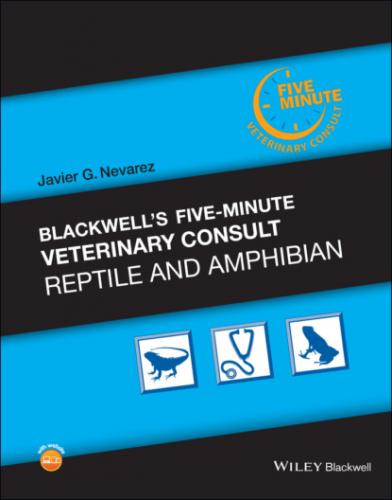Any husbandry or dietary deficiencies should be corrected.
Clients should be notified that offering live food items to anorectic animals could result in rapid, serious injury to their pet secondary to prey attacks.
For most cases, live prey should not be offered to chelonians without direct supervision.
DRUG(S) OF CHOICE
Commercial, high‐calorie formulations designed for nutritional support are recommended when feeding anorectic crocodilians.
Alternatively, a slurry can be made with a commercial pelleted diet.
PRECAUTIONS/INTERACTIONS
Exercise caution when force feeding, to prevent oral, esophageal, or gastric trauma.
Be careful not to administer too large a volume of nutritional formula in small patients.
Feed 1–3% of body weight initially to ensure the animal will tolerate the feeding.
PATIENT MONITORING
Individuals should be monitored for resolution of anorexia following correction of any husbandry and dietary deficiencies.
Serial imaging and blood chemistry evaluation may be considered to monitor for development or resolution of secondary liver diseases such as hepatic lipidosis.
In patients with esophagostomy tubes, the tube should be monitored for clogging and the stoma regularly evaluated for signs of infection.
EXPECTED COURSE AND PROGNOSIS
Anorexia may continue until the underlying reason is identified and treated, if applicable.
Prognosis for resolution of anorexia depends on the severity of the underlying cause.
COMMENTS
Simply providing appropriate husbandry will help prevent many causes of anorexia in chelonians.
Prompt diagnosis of true anorexia enables initiation of proper nutritional support and may prevent formation of hepatic lipidosis, which can perpetuate the lack of appetite.
Supportive care should be continued while an underlying cause for the anorexia is identified and corrected.
Gravid individuals may decrease their amount of food consumption from lack of coelomic space for GI distension.
Animals that are anorectic from an underlying pathologic condition may cease or abort reproductive activity due to preferential allotment of energy for other physiologic functions.
ZOONOTIC POTENTIAL
N/A
SYNONYMS
Anophagia
Aphagia
Inappetence
ABBREVIATIONS
AST = aspartate aminotransferase
BCS = body condition score
CBC = complete blood count
CT = computed tomography
GI = gastrointestinal
PCV = packed cell volume
TS = total solids
UVB = ultraviolet B
Suggested Reading
1 De Voe RS. Nutritional support of reptile patients. Vet Clin North Am Exot Anim Pract 2014; 17: 249–261.
2 Divers SJ, Stahl S, eds. Mader’s Reptile and Amphibian Medicine. 2nd ed. Saint Louis, MO: Elsevier; 2006.
Author Grayson Doss, DVM, DACZM
Aural Abscesses
DEFINITION/OVERVIEW
Aural abscesses are a common presentation of captive chelonians. They can be sterile but the majority are associated with bacteria, usually of digestive origin. May be observed in turtles suffering from subclinical hypovitaminosis A.
ETIOLOGY/PATHOPHYSIOLOGY
Otitis in chelonians is often due to secondary infections as result of squamous metaplasia from hypovitaminosis A leading to blockage of the auditory ducts causing lack of drainage.
Poor husbandry conditions and trauma may also be contributing factors.
Otitis caused by nematodes (due to internal duct migration) has also been described in Testudo graeca.
In box turtles, (Terrapene carolina), a possible correlation between the occurrence of otitis and environmental levels of organochlorine pesticides acting as immunosuppressive agents has been suggested, but the link is not definitively proven.
SIGNALMENT/HISTORY
Aural abscesses are observed almost exclusively in chelonians, with more frequent occurrences in American species (Trachemys sp., Graptemys sp., Pseudemys sp., Terrapene sp.) followed by European species (Testudo sp.).
There are some cases in saurians, but they are much less frequent.
Primarily seen in captive animals or wild‐caught animals that have been kept as pets and fed an inadequate diet.
CLINICAL PRESENTATION
Animals present with unilateral or bilateral swellings of the tympanic membrane.
These swellings can cause severe external and internal deformations of the era canal.
The swelling may start with a soft consistency but quickly becomes firm to hard as the material becomes caseous.
In extreme cases, abscesses can progress towards the inside of the skull and affect internal structures (brain, mandibular base, etc.).
Some animals may also present with conjunctivitis, blepharedema, nasal discharge, and overgrown beak and nails.
Some of these signs may suggest a concurrent respiratory infection.
RISK FACTORS
Husbandry
Poor
